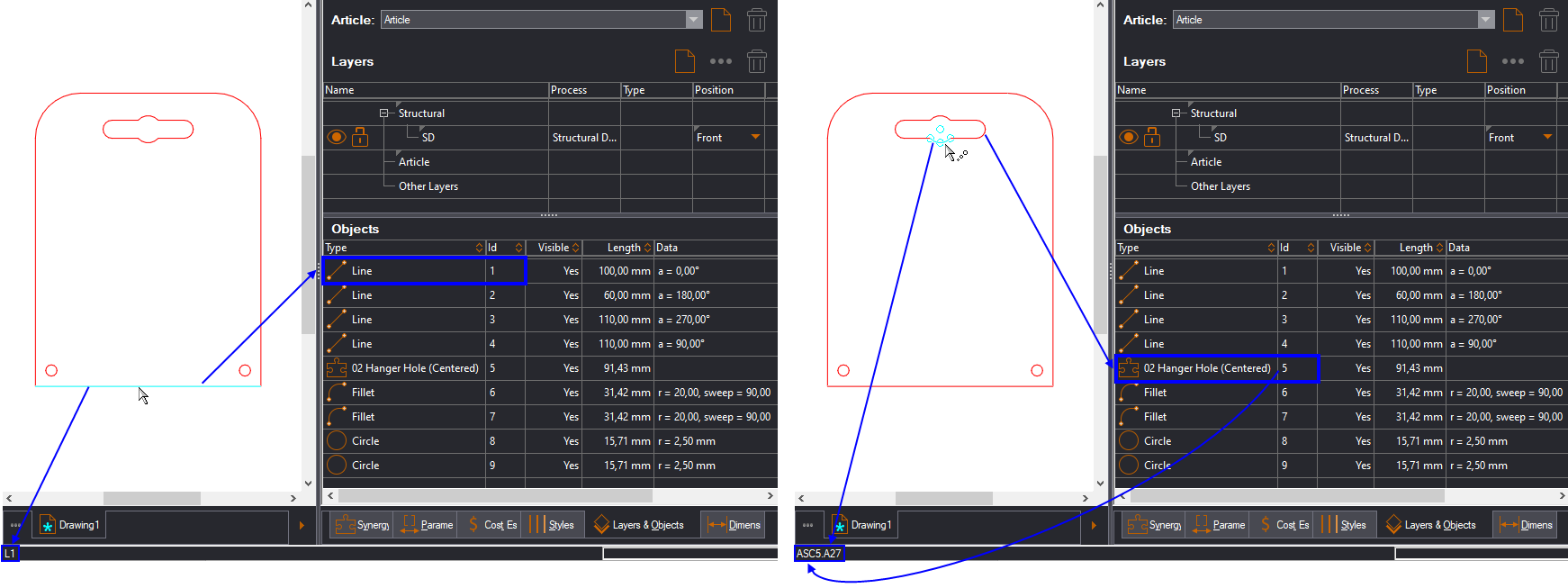The formula in this page extracts the values of various types of dimensions.
NOTE: The formulas requires that you supply the name (ID) of the dimension whose length you want to extract. Here's how to do this: (1) To see the name (ID) of a discrete object: Place the mouse cursor on the object. Do not click. The object becomes highlighted. Then look at the lower left corner of the application's window. (2) To see the name of an object in a Synergy component: Press and hold down CTRL+SHIFT, and then place the mouse cursor on the object. Do not click. The object becomes highlighted. Then look at the lower left corner of the application's window. The pictures below show you where to look for these names.

Consider the following example, which uses the objsize formula. The example explains the use of the formula in the expression of a component. The height of the rectangular panel equals the dimension that extracts the length of the edge of the triangular panel (Slope1).

The same formula when used in a cost model. The value of the Distance parameter equals that of the Slope3 dimension.

For all the formulas that follow you can use the following square brackets syntax to write complex expressions:
| $Oneup1[objsize("BSC1.L5", "") + objsize("BSC1.L7", "")]$ |
| To Extract | Use |
|---|---|
| A dimension value | OneUp1.objsize("name", "") |
| With Semicolon | With Comma |
|---|---|
| $Layout1.Length(Cutting; m; yes); n2$ | $Layout1.Length(Cutting, m, yes), n2$ |

| To extract the value of a dimension | Use | Example |
|---|---|---|
| With name Slope3 | OneUp1.objsize("Slope3"; "") | 185.50 |
| With name Radius4 | OneUp1.objsize("Radius4"; "") | 10.00 |
| Of a component with name ASC74.Slope13 | OneUp1.objsize("ASC74.Slope13"; "") | 12.00 |